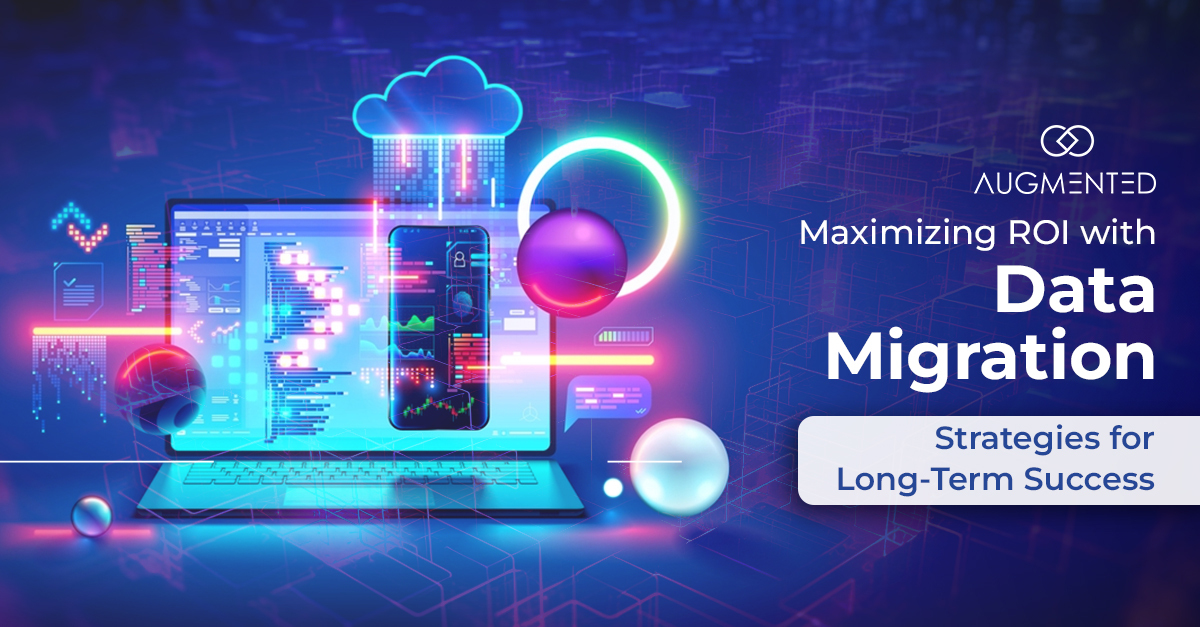Are you unsure if investing in a data migration process is worth the hassle? The decision is similar to leaving the corporate world to start a venture - risky, yet with great potential for rewards.
But how do ensure you get handsome ROI on your data migration efforts? How do you even calculate it? Well, you start by reading this blog.
Dig into the blog till the end to learn effective data migration strategies to optimize your data migration process for maximum ROI.
What is ROI in Data Migration, and How Can You Calculate It?
Return on investment (ROI) is a measure that shows how profitable your company's data transfer process is. The profit is calculated in relation to the expenses involved during the migration process.
The benefits of transferring your data should be > the expenses involved in the migration process.
So, if your data migration's benefits outweigh the costs and work involved, it will have a good return on investment (ROI). However, if the benefits are adverse, your ROI can be lower or even negative.
You can take some steps to calculate the ROI from data migration. Let’s take a look.
Steps to Measure ROI in Data Migration
Data migration is on the horizon and you want to get the most of your money.
You would want to upgrade, modernize or streamline your data infrastructure. It could be anything! But regardless of the cause or the scale of your business, you will search for methods to reduce your costs and maximize your profits.
So, below are the steps that you can take to maximize return on investment in your business.
Step 1: Determine the Costs:
Your company’s costs could be direct or indirect. Direct costs include expenses for migration software, software licenses, infrastructure, and labor. Indirect costs include training, hiring data migration consultants, and even downtime and disruptions.
Step 2: Make Benefit Estimations
Find out the benefit estimations you gained when transferring data to the cloud. For example, if you are experiencing less processing time, streamlined operations, or potential cost savings on the next system.
Moreover, do not overlook intangible benefits, such as customer satisfaction and enhancement in data accuracy.
Step 3: Do Calculations
Here, you calculate the overall benefits of your data migration process. You can do so by subtracting the total costs from the total revenue. Calculate the savings of expenditure, time and increase in revenue.
Using the net revenue, you can now calculate the percentage of your ROI with the following formula:
Calculating ROI as a percentage can help you determine which migration projects are worth your time, money, and expenses. Ultimately, this can maximize the return on investment for your organization.
Step 4: Consider the Time Frame and Potential Risks
When calculating ROI, it is also important to consider the duration over which the benefits and costs will be obtained.
Some benefits may be immediate, while others may take a longer time to occur.
Moreover, you may also experience some unforeseen risks. Therefore, consider data loss, extended downtime or unexpected costs that may affect the ROI calculations.
Step 5: Review, Monitor and Make Changes
Last but not least, monitor the performance of your migrated data. Review the entire process from start to post-migration. Now, calculate and adjust the ROI accordingly.
ROI calculations for data migration might be complicated due to various intangible aspects.
However, measuring and maximizing the return on investment for your data migration process can be effective. Keep reading the blog to know how.
5 Best Data Migration Strategies to Maximize Your ROI
The data migration trend continues to evolve - at a much faster pace now than ever.
But many data migration companies, businesses and organizations that have ventured into the cloud are trying to trim their expenses.
If you are one of them, here are the top five data migration strategies that can help you maximize your ROI.
1. Define Your Objective and Goals
First things first! Before you start your data migration process, define your objectives and set your goals. You can do so by framing a certain set of questions and finding their answers. The questions could be as follows:
- What are the starting points and target destination of your data migration?
- What are you aiming to achieve with this migration process?
- What benefits are you going to ensure after or during the transfer?
- Are you looking to improve efficiency, data security, or streamline processes?
- Is maximizing ROI a driving factor of your migration process?
Once you set these clear-cut goals, you can mitigate any potential risks and ensure the safety of your data.
2. Perform an All-Inclusive Data Assessment
The quality of your data is important. Low or poor-quality data can impact the smoothness of your migration process. It can lead to operational delays and downtime.
On the other hand, high-quality data reduces the risk of post-migration fixes. It also minimizes the delays or disruptions to your company's daily operations.
- So, before taking any action, carefully evaluate your data.
- Identify the data you need to migrate.
- Check the quality of that data.
- Implement quality checks through the migration process.
- Look for dependencies or constraints in the data.
- Now, foresee the challenges and develop a data migration strategy accordingly.
You may also take help from automated tools or data migration consultants to perform this assessment.
3. Choose the Appropriate Migration Tools
Another crucial data migration strategy is to choose an appropriate migration tool. Consider the following points when selecting a tool for your migration process.
- Consider factors such as data complexity and volume.
- Is there a compatibility between your source and target systems?
- Look for tools that include a user-friendly interface and are not complex or time-consuming.
- Find tools that speed ups and simplify your data transfer process.
No matter the tool you select, assess your options carefully. Choose the one that fulfills your requirements and resources. Find the tool that aligns with your objectives, budget and timeline.
Investing in the right tool will yield maximizing returns on investment down the line.
4. Give Data Governance and Quality Top Priority and Make Ongoing Improvements
As discussed, poor-quality data is a big no when transferring data from one system to another. It can undermine the ROI of your migration process.
- So first, invest your time and resources in ensuring the quality of your data.
- Second, for post-migration, develop solid governance methods to ensure data integrity.
- Third, plan for continuous improvement and optimizations in your data migration process.
Data migration is a continuous process that requires regular attention and refinement. And you need to evaluate your data over time to maximize ROI.
5. Continuously Invest in Training and Upgrading Skills
Learning is a never-ending process, especially when adopting new systems or processes. So invest in your employees.
- Provide training to your teams to learn new skills.
- Equip them with upgraded tools and knowledge to help them navigate the changes.
- You can streamline the migration process and ensure a successful outcome by leveraging your employees' skill sets, knowledge and expertise.
Your team is the most valuable asset when it comes to putting in efforts to maximize ROI through data migration.
Case Study: Amazon’s Migration to Amazon Web Services
The international e-commerce giant Amazon used data migration to transfer its gigantic data infrastructure to Amazon Web Services (AWS).
Amazon harnessed AWS's cloud computing capabilities to:
- Enhance cost-effectiveness, agility, and scalability.
- Handle peak demand, maximize available resources, and deliver flawless customer service.
Amazon uses customers' browsing history and purchase behavior to recommend personalized products. The global giant has significantly improved its ROI post-AWS.
Get Maximizing Return on Investment with Augmented
Data migration is not just a move but a strategic decision. It offers businesses many advantages and far-reaching benefits.
So, using the right tools and data migration strategies to get the most out of their data migration processes is crucial.
We at Augmented can help you stay competitive, maximize ROI, and achieve long-term business goals. So, contact us if you don't want to spend a fortune on data migration.





